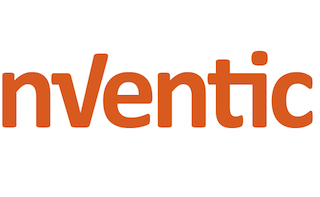
The constantly unrealized potential - 7 reasons why more organizations have not optimized their inventories
The opportunity to improve working capital is large across the economy. Macro studies from consultancies like The Hackett Group and PwC calculate the opportunity in the trillions of Euros. (1) There are many interesting points to note in these reports, of which we will highlight three:
- There is a wide spread in performance between companies. Hackett finds that upper quartile companies convert cash 7 times faster than the median
- Sustainability is a challenge, with very few companies demonstrating consistent improvements year on year. Both studies highlight this
- The only working capital lever consistently applied over recent years is Days Payable Outstanding (DPO). PwC finds that companies have increased pressure on their suppliers rather than managing their own assets better. But new payment terms legislation in several countries is limiting how much more can be achieved through DPO
All of this resonates with what we at nVentic observe as inventory optimization specialists. The opportunity to improve working capital through inventory optimization is great, but few organizations have achieved sustainably high performance in this area.
Why should this be so? Hackett highlights what it believes to be a reason why inventory has been neglected as a lever:
“Inventories can often be a… complex area to drive working capital optimization due to competing cross-functional objectives (cash/cost/service) and the ability to easily identify core improvement drivers from within. […] Generally, no one function can drive change without the participation and collaboration of the others, and the process re-engineering and optimization requirements needed to release cash internally can sometimes be politically overwhelming if the exact causes of excess inventories have not been determined.” (Hackett, 2018 US Working Capital Survey)
Inventory can indeed be a complex area to improve, and not just due to the cross-functional challenges involved. Inventory optimization even as a paper exercise requires a strong understanding of the key levers, some of which are complex in themselves and most of which are in a state of flux: the data challenge alone can be daunting. And even once you’ve determined the best course of action you still have to take the rest of the organization with you.
Our mission at nVentic is to help companies cut a path through the complexity. We have developed advanced diagnostic tools which automatically identify optimum inventory levels based on real data. But equally importantly we know how to handle multiple variables simultaneously and produce a clear and pragmatic way forward. For the truth of the matter is that the vast majority of companies can deliver significant double-digit improvements in their inventory position even before they address cross-functional issues.
Let us dig into why you (probably) haven’t optimized your inventory:
Why should this be so? Hackett highlights what it believes to be a reason why inventory has been neglected as a lever:
“Inventories can often be a… complex area to drive working capital optimization due to competing cross-functional objectives (cash/cost/service) and the ability to easily identify core improvement drivers from within. […] Generally, no one function can drive change without the participation and collaboration of the others, and the process re-engineering and optimization requirements needed to release cash internally can sometimes be politically overwhelming if the exact causes of excess inventories have not been determined.” (Hackett, 2018 US Working Capital Survey)
Inventory can indeed be a complex area to improve, and not just due to the cross-functional challenges involved. Inventory optimization even as a paper exercise requires a strong understanding of the key levers, some of which are complex in themselves and most of which are in a state of flux: the data challenge alone can be daunting. And even once you’ve determined the best course of action you still have to take the rest of the organization with you.
Our mission at nVentic is to help companies cut a path through the complexity. We have developed advanced diagnostic tools which automatically identify optimum inventory levels based on real data. But equally importantly we know how to handle multiple variables simultaneously and produce a clear and pragmatic way forward. For the truth of the matter is that the vast majority of companies can deliver significant double-digit improvements in their inventory position even before they address cross-functional issues.
Let us dig into why you (probably) haven’t optimized your inventory:
1. Do you know what good looks like?
How many organizations really know much inventory they should have? While it is practically impossible, given all of the variables in play, to say how much inventory an organization should have precisely, and recognizing that this theoretical number changes all the time, there is still enormous benefit in calculating what you need as accurately as possible. In the absence of a statistically derived target, organizations may rely purely on top-down or operationally-derived targets. Each has its weaknesses.
Top-down, an organization may simply aim to increase its inventory turns each year. All very well, but how do you set a target? For instance, your inventory might currently be turning over 12 times each year. What is your target for next year going to be? 13 times? 14 times? The point is, without calculating an optimized inventory policy bottom-up, item by item, you can’t know what is possible or desirable. It could be that 12 is already optimal and that by targeting 13 or 14 you are simply going to increase shortages. Or, much more likely, it could be that optimal is more like 20, in which case a target of 13 or 14 is undershooting.
You could derive a target by benchmarking your peers, and this is generally not a bad starting place, but even here care must be taken since optimal inventory levels are very heavily influenced by variables such as lead times, capacity utilization and target service levels, which may well differ greatly even between peers. And how do you know if even your best performing peer is that close to optimal?
At an operational, planning level, organizations are most likely already deriving their own targets as they try to ensure they have enough to meet expected demand. Because this is done on an ongoing basis the implied targets may never be formalised as such. This type of target is the province of Operations and rarely gets visibility at a board level. Or put another way, the target is used for planning and not for performance management. It is used to drive immediate action (order more, produce less, etc.). It is not a goal to work systematically towards.
Related to this question of what good looks like is what you measure:
Top-down, an organization may simply aim to increase its inventory turns each year. All very well, but how do you set a target? For instance, your inventory might currently be turning over 12 times each year. What is your target for next year going to be? 13 times? 14 times? The point is, without calculating an optimized inventory policy bottom-up, item by item, you can’t know what is possible or desirable. It could be that 12 is already optimal and that by targeting 13 or 14 you are simply going to increase shortages. Or, much more likely, it could be that optimal is more like 20, in which case a target of 13 or 14 is undershooting.
You could derive a target by benchmarking your peers, and this is generally not a bad starting place, but even here care must be taken since optimal inventory levels are very heavily influenced by variables such as lead times, capacity utilization and target service levels, which may well differ greatly even between peers. And how do you know if even your best performing peer is that close to optimal?
At an operational, planning level, organizations are most likely already deriving their own targets as they try to ensure they have enough to meet expected demand. Because this is done on an ongoing basis the implied targets may never be formalised as such. This type of target is the province of Operations and rarely gets visibility at a board level. Or put another way, the target is used for planning and not for performance management. It is used to drive immediate action (order more, produce less, etc.). It is not a goal to work systematically towards.
Related to this question of what good looks like is what you measure:
2. What KPI's do you use to assess inventory performance?
KPI’s drive behaviours, so the KPI’s you use to measure inventory performance will have an important impact on your overall performance. We can divide inventory KPI’s into two broad groups:
You can judge whether you have enough inventory by measuring how successfully you meet customer demand. The vast majority of organizations use one or more measures of service level, whether it be fill rate, cycle service level, shortages, back orders, lost sales, ready rate, out of stock time, or similar.
Having enough inventory is usually a higher priority for most organizations than avoiding having too much. We find that most organizations lack KPI’s to avoid overstocking, unless it is a high level one like inventory turns. And this is already a driver of underperformance. If you don’t have some kind of balance in your KPI set – so that your teams are trying to keep inventories within a range, rather than just one side of a minimum – you will almost inevitably carry too much inventory across the board. The occasional, or not so occasional, shortage only heightens the perception that shortages are the real risk.
Knowing what good looks like is a prerequisite to having a good set of balanced inventory KPI’s.
Also important is how those KPI’s are used – who is measured by them, who sees them and how targets are set and balanced. If different parts of your organization (say Sales and Operations) are using KPI’s in direct conflict with each other without a robust Sales, Inventory & Operations Planning (SI&OP) process in place, it can quickly turn into a turf war rather than a collaborative effort to optimize overall business outcomes. Remember that KPI’s drive behaviours!
- Measures of whether you have enough inventory
- Measures of whether you have too much inventory
You can judge whether you have enough inventory by measuring how successfully you meet customer demand. The vast majority of organizations use one or more measures of service level, whether it be fill rate, cycle service level, shortages, back orders, lost sales, ready rate, out of stock time, or similar.
Having enough inventory is usually a higher priority for most organizations than avoiding having too much. We find that most organizations lack KPI’s to avoid overstocking, unless it is a high level one like inventory turns. And this is already a driver of underperformance. If you don’t have some kind of balance in your KPI set – so that your teams are trying to keep inventories within a range, rather than just one side of a minimum – you will almost inevitably carry too much inventory across the board. The occasional, or not so occasional, shortage only heightens the perception that shortages are the real risk.
Knowing what good looks like is a prerequisite to having a good set of balanced inventory KPI’s.
Also important is how those KPI’s are used – who is measured by them, who sees them and how targets are set and balanced. If different parts of your organization (say Sales and Operations) are using KPI’s in direct conflict with each other without a robust Sales, Inventory & Operations Planning (SI&OP) process in place, it can quickly turn into a turf war rather than a collaborative effort to optimize overall business outcomes. Remember that KPI’s drive behaviours!
3. Who has inventory targets as part of their personal goals?
This flows from the KPI discussion. Mostly likely your inventory planners do. But how about your general managers? A planner can only do so much without the alignment of the rest of the organization. Of course, you don’t want everyone bogged down with the minutiae of inventory metrics, but how about charging 20% of the inventory value (a reasonable approximation of holding costs) back to the P&L of each general manager? See what difference that makes to inventory levels!
4. Do you consider inventory optimization to be risky? If you hear people talk about reducing your inventory by 25% do you immediately think of shortages?
We have encountered few executives who wouldn’t welcome reduced working capital in principle. But if organizations consistently fail to take full advantage of this opportunity, one of the main reasons is surely the perceived risk. The whole purpose of inventory after all is to enable you to supply your customers with as much of your product as economically desirable. Especially when the cost of capital is low and profitability is strong, why risk running short when you can just carry a little more inventory? Yet inventory optimization and inventory reduction are not synonymous. Good inventory optimization initiatives simultaneously reduce inventory levels and shortages.
This counter-intuitive phenomenon is due to the individuality of every single item you hold in inventory. Each one has its own unique profile in terms of demand, demand variability, lead time variability, perishability, normality of distribution, and so on and so forth. What we invariably find when we analyse organizational data sets is that while some (and usually most) items are overstocked, a smaller number are understocked. Inventory optimization addresses both of these issues. This is why you can simultaneously reduce your overall inventory levels while increasing inventories of some items and therefore reducing shortages. This is one of the few occasions in life where you really can have your cake and eat it!
This counter-intuitive phenomenon is due to the individuality of every single item you hold in inventory. Each one has its own unique profile in terms of demand, demand variability, lead time variability, perishability, normality of distribution, and so on and so forth. What we invariably find when we analyse organizational data sets is that while some (and usually most) items are overstocked, a smaller number are understocked. Inventory optimization addresses both of these issues. This is why you can simultaneously reduce your overall inventory levels while increasing inventories of some items and therefore reducing shortages. This is one of the few occasions in life where you really can have your cake and eat it!
5. Are you spending money on inventory optimization tools but are still unsure what good looks like or what value you have really got from them?
We are not opposed to the many inventory optimization tools on the market. On the contrary, we believe there are several good ones out there. But here is the rub. Are they being used, and are they being used to their full potential? Plus do the people using them understand their limitations and sensitivities? We come across many organizations with licenses to advanced inventory optimization tools that they barely use, if at all. In many cases trials were made with the tools but problems were encountered so they are switched off and old and trusted manual methods are reinstated. The possible causes of confusion are numerous, but to list a few common examples:
In short, inventory optimization tools and statistical models more generally can be immensely valuable, but only if used correctly. Used incorrectly they can be positively detrimental. Because the expertise to get the most out of these tools is rare, they tend not to deliver on their promise. This is (often) not so much a fault in the tools themselves as in how they are used.
- Do your tools require a single lead time, and do you know what to do if your lead time varies?
- Are your tools dependent on you feeding them a forecast and are you using unconstrainted sales forecasts which invariably fail to materialize?
- Are your tools reliant on data in your ERP system? Do you know which data and how accurate and up-to-date they are?
- Do your tools offer you alternative settings that you find hard to choose between because you don’t really understand what each means or what difference it will make?
- Do your tools produce values that you know from all practical experience to be incorrect, but you can’t tell why?
- Do your tools assume normal distribution of demand? If so, do you know how to test for normality and what to do with other types of statistical distribution?
In short, inventory optimization tools and statistical models more generally can be immensely valuable, but only if used correctly. Used incorrectly they can be positively detrimental. Because the expertise to get the most out of these tools is rare, they tend not to deliver on their promise. This is (often) not so much a fault in the tools themselves as in how they are used.
6. Do you manage to reduce inventories from time to time when you have a big push on working capital, but find the levels always seem to rise again?
It is true of most things in life that given attention they improve, but when neglected they soon revert to a lower level. Yet there seems to be something about inventory which makes it particularly prone to this phenomenon. Why does sustainability seem to be such a challenge? We believe there are two main reasons.
Firstly, inventory reduction can be quick and simple to deliver. You just need to buy and/or produce less! Thus, when companies have a sudden need to free up working capital a strong top-down mandate is usually sufficient. But done crudely, this creates problems, since shortages usually follow. After the initial squeeze, therefore, inventories return to their previous levels as operations revert to their normal way of functioning. Nothing really changed other than a temporary prioritisation.
Secondly, thorough approaches require a certain level of expertise and a concerted effort. When there is a big push on inventories, consultants may be brought in and additional internal efforts also allocated. But this increase in resource is temporary and this in itself creates problems with sustainability, while any deep statistical analysis conducted has the disadvantage of being static.
Rather like inventory optimization tools, one-off projects are not a silver bullet. To deliver sustainable improvements in inventory you have to invest in internal capabilities, frequently refresh analysis and maintain top-down pressure.
Firstly, inventory reduction can be quick and simple to deliver. You just need to buy and/or produce less! Thus, when companies have a sudden need to free up working capital a strong top-down mandate is usually sufficient. But done crudely, this creates problems, since shortages usually follow. After the initial squeeze, therefore, inventories return to their previous levels as operations revert to their normal way of functioning. Nothing really changed other than a temporary prioritisation.
Secondly, thorough approaches require a certain level of expertise and a concerted effort. When there is a big push on inventories, consultants may be brought in and additional internal efforts also allocated. But this increase in resource is temporary and this in itself creates problems with sustainability, while any deep statistical analysis conducted has the disadvantage of being static.
Rather like inventory optimization tools, one-off projects are not a silver bullet. To deliver sustainable improvements in inventory you have to invest in internal capabilities, frequently refresh analysis and maintain top-down pressure.
7. Do you find inventory a difficult topic? Would you rather focus on less complex things?
It makes sense to do easy things that will make a positive difference before turning to more difficult ones. The business case for optimizing inventories is normally extremely strong – a reduction in working capital and holding costs, combined with an improvement in service level, all delivered at a very strong return on investment. So the fact that most organizations have not done more inventory optimization comes down, above all, to this one consideration: that it is difficult.
While not underestimating the human or political difficulties involved, we believe that what differentiates inventory optimization from many other business change initiatives is the difficulty working out how much inventory you really need, which needs to be calculated on a regular basis. But without this essential first step, done really thoroughly, all of your other efforts will be sub-optimal. You won’t be able to set the right targets, using the right KPI’s, allocated to the right people. You will be at risk of running short and potentially spending money on initiatives without being able to tell how successful they really are.
Yet we believe this difficulty is also one of the reasons why inventory optimization is a great topic to address. Precisely because inventory optimization is a frequently neglected opportunity, significant double-digit improvements are possible in most cases.
To return to one of the Hackett metrics with which we opened: top quartile companies convert cash 7 times faster than median companies. On how many metrics do you have this kind of advantage over your competitors? Surely this is worth overcoming some difficulties to achieve?!
Conclusions
There are many reasons why organizations fail to maintain optimal inventories. We have explored 7 of the most common here, of which we consider the ability to know what good looks like to be the single most important. Based on this insight, nVentic has developed diagnostic tools which quickly and accurately show clients how much inventory they should hold. We then work with them to embed sustainable inventory capabilities in their teams.
Until the macro reports start showing a marked and sustained decrease in inventories, our work will not be complete.
If you would like to discuss how to define what good looks like for your organization and take your inventory optimization capabilities to the next level, contact us: information@nventic.com
While not underestimating the human or political difficulties involved, we believe that what differentiates inventory optimization from many other business change initiatives is the difficulty working out how much inventory you really need, which needs to be calculated on a regular basis. But without this essential first step, done really thoroughly, all of your other efforts will be sub-optimal. You won’t be able to set the right targets, using the right KPI’s, allocated to the right people. You will be at risk of running short and potentially spending money on initiatives without being able to tell how successful they really are.
Yet we believe this difficulty is also one of the reasons why inventory optimization is a great topic to address. Precisely because inventory optimization is a frequently neglected opportunity, significant double-digit improvements are possible in most cases.
To return to one of the Hackett metrics with which we opened: top quartile companies convert cash 7 times faster than median companies. On how many metrics do you have this kind of advantage over your competitors? Surely this is worth overcoming some difficulties to achieve?!
Conclusions
There are many reasons why organizations fail to maintain optimal inventories. We have explored 7 of the most common here, of which we consider the ability to know what good looks like to be the single most important. Based on this insight, nVentic has developed diagnostic tools which quickly and accurately show clients how much inventory they should hold. We then work with them to embed sustainable inventory capabilities in their teams.
Until the macro reports start showing a marked and sustained decrease in inventories, our work will not be complete.
If you would like to discuss how to define what good looks like for your organization and take your inventory optimization capabilities to the next level, contact us: information@nventic.com
Notes
1. For the most recent editions of these reports at the time of publication, see The Hackett Group, 2018 Europe Working Capital Survey and 2018 US Working Capital Survey, and PwC, Navigating Uncertainty, PwC’s annual global Working Capital Study 2018/19. Each of these documents looks at a different selection of companies and each finds a potential of at least 1 trillion Euros or Dollars for the selection they look at.
1. For the most recent editions of these reports at the time of publication, see The Hackett Group, 2018 Europe Working Capital Survey and 2018 US Working Capital Survey, and PwC, Navigating Uncertainty, PwC’s annual global Working Capital Study 2018/19. Each of these documents looks at a different selection of companies and each finds a potential of at least 1 trillion Euros or Dollars for the selection they look at.
Would you like to receive more content like this, direct to your inbox? We publish white papers on a range of supply chain topics approximately once every one to two months. Subscribe below and we will notify you of new content. Unsubscribe at any time.
Would you like to talk to one of our experts? Contact us








